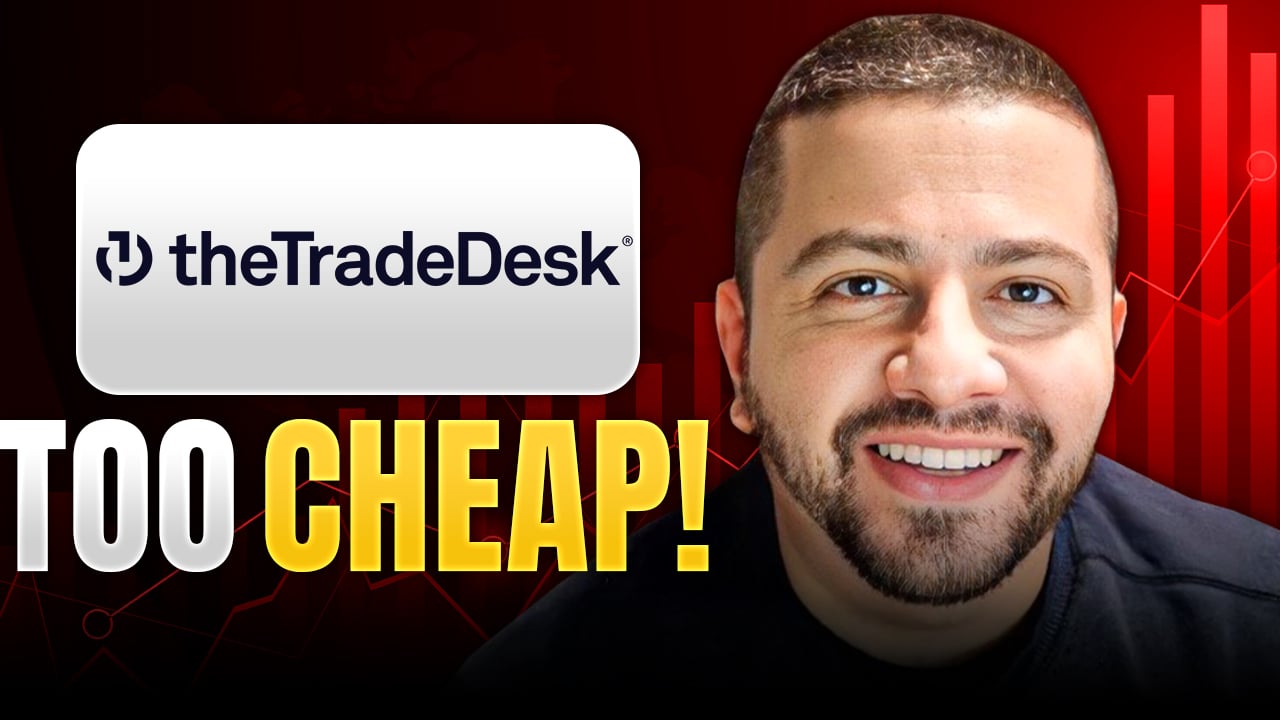Shares of leading demand-side programmatic advertising company The Trade Desk (TTD 1.04%) are down by nearly 54% so far in 2025. While the company's revenues rose 19% year over year to $694 million in the second quarter of fiscal 2025 (ended June 30, 2025), ahead of consensus estimates of $686 million, they failed to improve investor confidence.

Image source: Getty Images.
Weak third-quarter fiscal 2025 guidance has negatively affected investor sentiment. Management is guiding for revenues of $717 million, below the consensus estimate of $722 million. The company also expects adjusted EBITDA of $277 million, implying an adjusted EBITDA margin of 38.6%. This is slightly lower than the 39% adjusted EBITDA margin in the second quarter. A slowing growth rate can have a dramatic impact on the share prices of companies previously trading at high valuation multiples.
However, things may soon take a turn for the better. In the second quarter, nearly three-quarters of the company's ad spending was through its artificial intelligence (AI)-powered Kokai platform. The robust pace of adoption highlights advertisers' growing confidence in the company's data-driven capabilities. Hence, although management expects near-term softness and macro uncertainty, The Trade Desk's strong fundamentals and continued strength in connected TV (CTV) and retail media can set the stage for a solid rebound in 2026.
Multiple headwinds
It is indisputable that The Trade Desk is currently facing challenges in multiple areas. Management explained that increasing macroeconomic uncertainty, tariffs, and inflation are affecting large global advertisers. This is challenging for The Trade Desk, as these advertisers form a significant part of the company's client base.

NASDAQ: TTD
Key Data Points
According to the Interactive Advertising Bureau's recent report (IAB's 2025 Outlook Study September Update: A Snapshot of the Latest Ad Spend Trends, Opportunities, and Strategies for Growth), 91% of over 200 surveyed ad buyers reported concerns about tariffs affecting media budgets. Nearly 62% to 69% of ad buyers expect the auto, retail, and consumer electronics sectors to be hit hard by the tariffs. Many advertisers in these segments are already adjusting their spending strategies to balance costs.
With IAB lowering the 2025 U.S. ad spend outlook from 7.3% to 5.7%, it is evident that ad budgets have come under significant pressure. Amid the slowdown, competition from walled gardens such as Alphabet, Meta Platforms, and Amazon has intensified further as they are trying to leverage their broad ecosystems and first-party data advantages.
A turnaround on the horizon
Despite near-term weakness, several catalysts could help The Trade Desk turn the corner in 2026.
First, the company's Kokai platform, powered by the proprietary AI engine Koa, represents a significant platform overhaul to help advertisers improve precision, relevance, and targeting of their ad campaigns. Management noted that campaigns run in Kokai are demonstrating over 20-point improvement in key performance indicators as compared to those run with legacy systems. Additionally, clients who have shifted ad spend on Kokai are increasing their overall spend with the company more than 20% faster than others. Kokai is helping improve several areas in programmatic advertising, including campaign optimization, forecasting deals between advertisers, publishers, and intermediaries, and supply path optimization (selecting the right media to place ads). All these initiatives can help brands ensure deeper engagement and higher return on ad investment.
Second, CTV remains the fastest-growing delivery channel for The Trade Desk. In the second quarter, video advertisements, including CTV, accounted for a high 40% of the company's total revenues. The company's CTV partners, such as Walt Disney, NBCU, Walmart, Roku, LG, and Netflix, are strengthening their relationships. eMarketer has also highlighted that CTV is being increasingly preferred over linear TV for ad dollars.
Linear TV currently accounts for nearly 12% of global ad spend, while CTV is expected to account for over 40% by 2030. CTV is also likely to add almost $20 billion to U.S. ad spending in the next five years. The Trade Desk is well positioned to capture a significant share of the rapidly evolving CTV market. In October 2025, the company announced a major AI-powered upgrade to its marketplace, Audience Unlimited, enabling advertisers to leverage relevant third-party data in their campaigns cost-effectively.
Third, The Trade Desk is also fostering pricing transparency on its platform with initiatives such as OpenPath and Deal Desk. OpenPath enables media publishers to see exactly how much advertisers are willing to pay for ad impressions, while also giving brands clear visibility into the media inventory they are purchasing. Deal Desk helps optimize deals between publishers and advertisers in real time, and also uncovers better opportunities. Hence, the company's focus on openness and transparency can prove to be a significant edge in the coming years.
Valuation
The Trade Desk is trading at 9.9 times sales, which is significantly below its five-year historical average of 20.19 times. The valuation appears even more reasonable considering the company's expanding AI capabilities and dominant position in the programmatic advertising space. The Trade Desk ended the second quarter with $1.7 billion in cash, which is sufficient to fund its future growth initiatives.
Considering all these factors, despite the risks, this may be a smart entry point in the stock ahead of a potential rebound in 2026.





